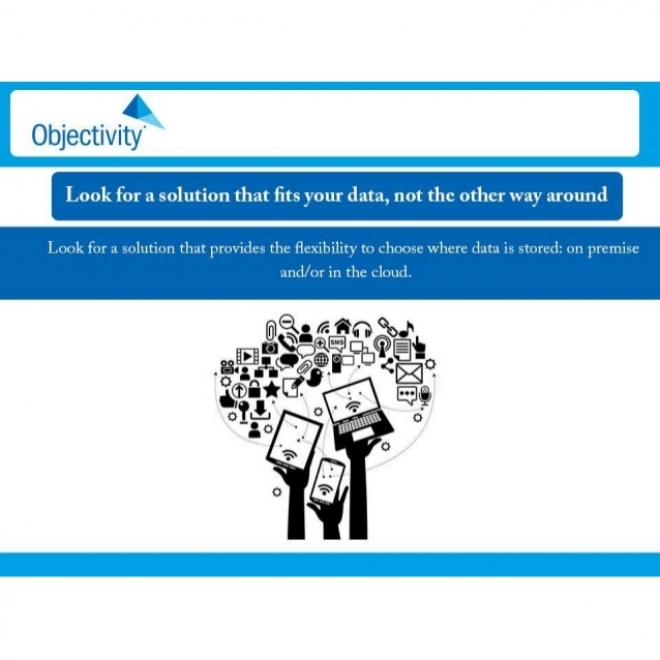Case Studies.
Our Case Study database tracks 18,927 case studies in the global enterprise technology ecosystem.
Filters allow you to explore case studies quickly and efficiently.
-
(3)
- (1)
- (1)
- (1)
-
(2)
- (1)
- (1)
- (1)
- View all
-
(2)
- (1)
- (1)
- (1)
-
(1)
- (1)
-
(1)
- (1)
- View all 7 Technologies
- (2)
- (2)
- (1)
- (1)
- (2)
- (1)
- (1)
- (1)
- (1)
- View all 5 Functional Areas
- (2)
- (1)
- (1)
- (1)
- (1)
- View all 7 Use Cases
- (2)
- (1)
- (1)
- (5)
Selected Filters
5 case studies
|
Siemens Industry: Manufacturing, Process Control & Automation
Objectivity
Building control systems have traditionally managed heating, ventilation and air conditioning (HVAC) separately from other systems. Siemens Industry, Inc., envisioned a greater sophistication: Why not build a control system that would co-ordinate all these variables, as well as monitor building humidity, fire alarms, door locks, security, lighting and other building features, all while collecting historical data and storing network configuration information?
|
|
Evaluating Snowflake's Data Warehouse Solution for EFL S.A.
Objectivity
EFL S.A., a leading leasing company in Poland, was looking to upgrade their data warehouse system, a crucial component of their operations. The company was considering a full migration to Snowflake, an innovative data warehouse solution. EFL's data warehouse is large and complex, with multiple departments requiring access to different parts of it. The company wanted to verify the effectiveness of Snowflake's tools in managing this complexity. They also wanted to assess whether Snowflake could meet their needs in terms of functionality, performance, and cost-efficiency. It was important for EFL to get an independent expert opinion and not rely solely on the data and materials provided by the vendor. They chose Objectivity for this task, due to their successful past collaborations.
|
|
Revamping a Multi-Site Paint Mixing System for Enhanced Efficiency and User Experience
Objectivity
The client, a global paint manufacturer with multiple production sites across continents, relied on a single system for mixing and labelling produced paint. Any significant malfunction or downtime of this application would halt production, leading to financial losses. The client was using a bespoke application delivered by a third-party vendor, which required multiple manual steps to launch, such as selecting the correct databases. The client sought to automate this process and reduce the solution’s technical debt, which was slowing down paint production. Additionally, the existing desktop app had compatibility issues with the new version of the Microsoft operating system. The client needed a reliable partner to provide baseline support and continuous improvements to this business-critical system.
|
|
Enterprise Architecture Audit for Sustainable Energy Company Tonik Energy
Objectivity
Tonik Energy, a UK-based renewable energy company, was facing a challenge with its enterprise architecture. The company had ambitious growth plans and needed an environment that was simple, easily expandable, clearly understood, maintainable, and supportable. However, the existing architecture was largely cloud-based, using modern development frameworks and technologies, but there were significant gaps in knowledge and documentation. There was also a lack of consistency in the service delivery and change management processes. The architecture owner urgently needed to understand whether the existing enterprise architecture was fit for purpose, both in the short term and for the longer term.
|
|
Digital Transformation of Paper-Based Processes for a Major European Airline
Objectivity
The client, a major European airline, was grappling with a cumbersome document verification process. Their ground handling office was processing over 10,000 invoices a month, delivered by nearly 600 independent companies and contractors. These invoices came in different formats and languages, making the process time-consuming and requiring the involvement of multiple people and teams. This not only delayed data analysis and subsequent actions but also made the entire process prone to errors. The client sought to optimize this process and engaged Objectivity to develop a solution for automated verification of documents and easier error detection. The team was tasked with building a Proof of Concept (PoC) using Microsoft’s technology stack to validate documents from different sources and formats.
|





